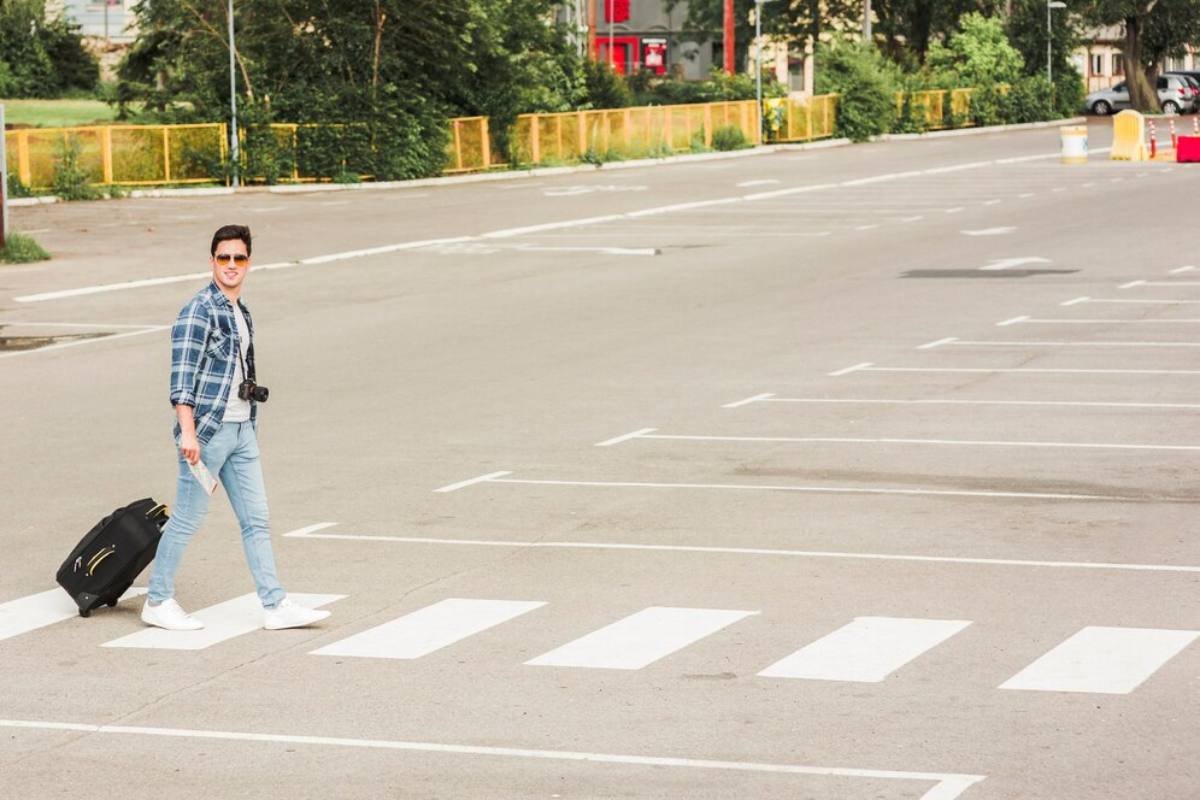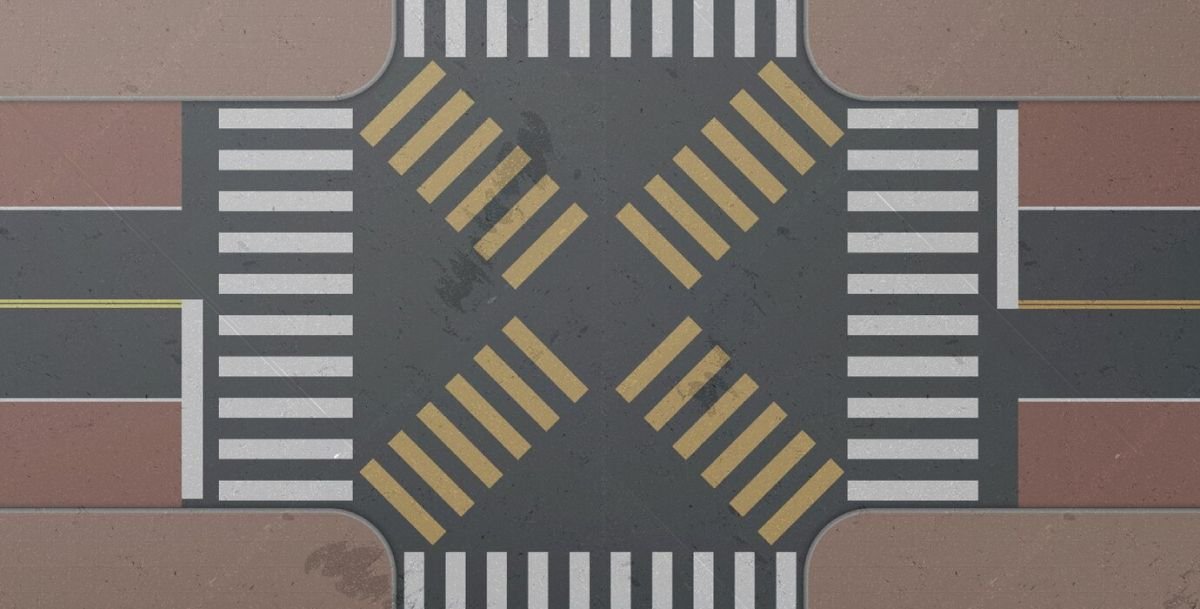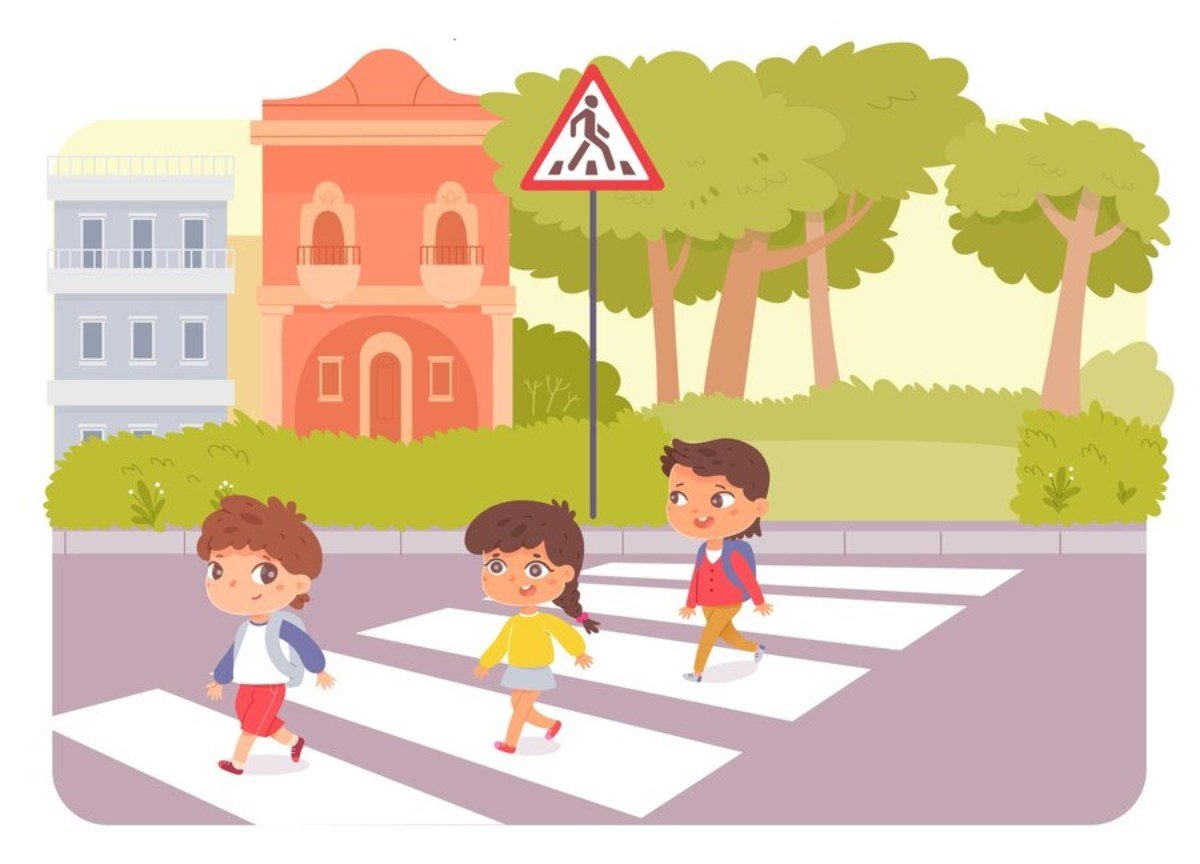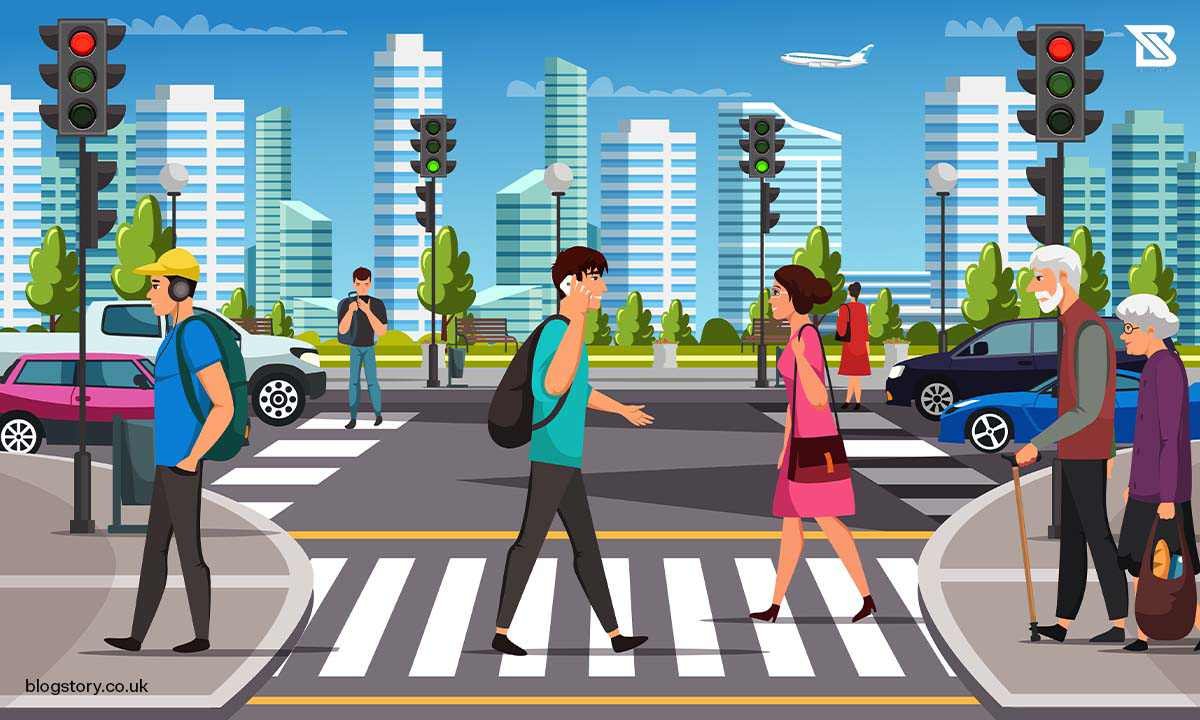Are marked crosswalk a mystery to you?
Explore the realm of pavement markings with ease and clarity. Discover the importance and nuances of marked crosswalks, which are crucial for managing traffic and ensuring pedestrian safety.
With the information provided in this extensive guide, you will be equipped with the knowledge necessary to safely navigate streets.
It provides insights into the significance, design, and regulations surrounding marked crosswalk.
It is essential for safer and more effective transportation systems for everyone to understand marked crosswalks, whether they are drivers, pedestrians, or urban planners.
Examine this authoritative source to learn more about how marked crosswalk improve community well-being and shape our streets.
What Is A Crosswalk?

Crosswalks can be classified as “marked” or “unmarked.”
According to the California Vehicle Code, a “crosswalk” is any section of a road that is designated as a pedestrian crossing location by painted lines, or it can be any portion of a roadway that is an extension of the curb and property lines of the intersecting street.
What Are Marked Crosswalks?

Any crosswalk that has painted or painted markings in yellow or white on the pavement qualifies as a “marked crosswalk.”
For that reason, all other crosswalk locations are “unmarked.”
Marked crosswalks help designate right-of-way for cars to yield to pedestrians and show where it is best or preferred for pedestrians to cross.
Since pedestrians are sensitive to obstructions in their path, it is important to make reasonable accommodations to ensure that crossings are both safe and convenient when there is sufficient visibility.
The Manual on Uniform Traffic Control Devices (MUTCD) provides a variety of crosswalk marking patterns, such as transverse lines, ladders, and continental markings.
Parallel line crosswalks are not recommended; instead, high-visibility crosswalks are.
In certain areas with high pedestrian traffic, marked crosswalks are preferable because they direct people along a preferred walking route.
At signalized intersections and other carefully chosen sites with suitable volumes of foot and vehicle traffic, crosswalks are frequently installed.
Installing crosswalks should go hand in hand with other improvements that lower vehicle speeds and physically reinforce crosswalks.
The Resources section contains suggested guidelines and priorities for installing crosswalks at uncontrolled locations.
These recommendations are based on a thorough analysis of 1,000 unmarked crossings and 1,000 marked crosswalk in 30 American cities.
When it comes to multilane roadway crossings where the average daily traffic exceeds 10,000 vehicles annually, a marked crosswalk is usually insufficient.
In order to avoid an increase in the risk of pedestrian crashes, more significant crossing improvements are also required.
Treatments such as PHB, RRFB, and Refuge Island are more extensive.
Various Types Of Pedestrian Crosswalk Pavement Markings
In the bustling tapestry of urban landscapes, marked crosswalk serve as vital connectors, ensuring safe passage for pedestrians amidst the flow of vehicular traffic.
However, not all crosswalks are created equal. Understanding the nuances of various types of crosswalk pavement markings is crucial for both pedestrians and drivers alike, as it directly impacts safety and efficiency on the roads.
1. Standard Marked Crosswalks
These are the quintessential crosswalks, characterized by parallel white lines painted on the road, often accompanied by pedestrian crossing signs.
Found at intersections and designated pedestrian crossings, these markings signal drivers to yield to pedestrians.
2. Zebra Crosswalks
Recognizable by their distinctive alternating black and white stripes, zebra crosswalks provide heightened visibility and emphasis on pedestrian right-of-way.
Typically situated in high-traffic areas or near schools, zebra crosswalks prioritize pedestrian safety by commanding attention from motorists.
3. Rectangular Rapid Flashing Beacon (RRFB) Crosswalks
Incorporating technological advancements, RRFB crosswalks feature flashing lights activated by pedestrians, effectively capturing drivers’ attention.
This dynamic visual cue enhances visibility, particularly in low-light conditions, reducing the risk of pedestrian-vehicle collisions.
4. Raised Crosswalks
Elevated slightly above street level, raised crosswalks offer a physical barrier between pedestrians and vehicles, encouraging reduced speeds and heightened awareness from drivers.
These installations are especially prevalent in areas prioritizing pedestrian safety and traffic calming measures.
5. Decorative or Artistic Crosswalks
Infusing creativity into urban infrastructure, decorative or artistic crosswalks serve both functional and aesthetic purposes.
Vibrant patterns and designs not only delineate pedestrian pathways but also foster community engagement and beautification of public spaces.
6. Buffered Crosswalks
Buffer zones delineate space between pedestrians and vehicles, providing an added layer of safety.
These crosswalks often incorporate painted or physical barriers, such as planters or bollards, fostering a clear separation between pedestrian walkways and vehicular lanes.
7. Pedestrian Refuge Islands
Strategically positioned within crosswalks, pedestrian refuge islands offer safe havens for pedestrians midway through road crossings.
Particularly beneficial on wide or multi-lane roads, these islands mitigate exposure to traffic and facilitate crossing in stages.
Where Are Crosswalk Markings Usually Done?
Crosswalks are designated at intersections where there is a significant amount of conflict between vehicle and pedestrian movement, where there is a concentration of people walking, where it is difficult for people to know where to cross, and where traffic is controlled. Some instances of these places are:
- Approved school crossings.
- It is forbidden to cross at one or more locations at signalized and four-way stop intersections where there is a lot of foot traffic.
These illustrations adhere to the idea that crosswalk markings serve as a kind of support.
In the first example, we are urging schoolchildren to cross at a crossing that is typically under observation.
In the second instance, we advise every pedestrian to steer clear of a forbidden crossing.
Crosswalks at mid-block locations where traffic is not controlled by traffic signals or stop signs are not painted by the City per policy.
Because drivers do not anticipate crosswalks in these areas, there is an element of surprise for them.
Vehicle crashes involving pedestrians are caused by this element of surprise. The use of painted crosswalks to guide pedestrians along the safest path should only be done when absolutely necessary.
School Crosswalks: The Rules

When a designated crosswalk is installed next to a school or on school property, it must be painted yellow if the distance between the crosswalk’s nearest point and the building or property is less than 600 feet.
All crossings on the “safe route to school,” which you can get from your neighborhood school, should have crosswalks marked.
Additionally, they ought to be marked with markers in areas where there is a lot of traffic-student conflict, where students are allowed to cross between intersections, or where students are unable to cross.
Teaching school-age children where and how to cross the street safely is the best safety precaution.
The best way to teach your kids the safest route to and from school is to show them the “safe route to school” map for your community.
Bottom Line
Knowing the markings on the pavement of marked crosswalk makes navigating them simple. These visual cues, which range from pedestrian symbols to zebra stripes, improve safety for both drivers and pedestrians.
People can promote an environment of mutual respect and cooperation on the roads, which will improve traffic flow and lower the number of accidents, by understanding the significance of each marking.
Recall that pedestrian rights are paramount at critical intersections, such as those marked by crosswalks.
For a safer and more peaceful commute, understand the significance of these pavement markings whether you’re driving on suburban roads or busy city streets.
Accept information, exercise caution, and give pedestrian safety a top priority.
You May Like Also:

Your point of view caught my eye and was very interesting. Thanks. I have a question for you.
where to buy cheap clomid where to buy generic clomiphene without prescription where can i buy generic clomid buying cheap clomid without dr prescription order clomid for sale cheap clomid without insurance buying generic clomid price
More articles like this would frame the blogosphere richer.
I’ll certainly return to be familiar with more.
order semaglutide 14 mg without prescription – brand cyproheptadine 4mg buy cheap generic cyproheptadine
domperidone 10mg us – buy generic cyclobenzaprine 15mg flexeril online order
buy cheap inderal – plavix pills buy generic methotrexate
brand amoxil – where to buy amoxil without a prescription ipratropium pills
zithromax over the counter – cheap tindamax 300mg oral nebivolol